The Unsung Hero of User Interfaces: My 20-Year Journey with Membrane Switches
Time:
2025-07-01
As an engineer who has spent two decades immersed in the world of electronic product development, I've seen countless technologies come and go. Yet, one humble component has consistently proven its worth, evolving quietly in the background while enabling intuitive and reliable user interaction across a vast array of devices: the membrane switch.

From the simple controls of a microwave oven to the sophisticated interfaces of medical equipment, these thin, flexible marvels are everywhere. My journey in this field has been a fascinating exploration of their intricacies, their surprising versatility, and the often-underestimated engineering challenges they present. In this article, I want to share my insights, drawing from real-world experiences, the lessons learned, and the technical depths that make membrane switches an indispensable part of modern electronics. Whether you're an aspiring engineer, a seasoned product manager, or an industrial designer seeking the perfect interface solution, I hope my perspective sheds new light on this unsung hero.
What Exactly is a Membrane Switch? A Deep Dive from My Experience
At its core, a membrane switch is a custom switch assembly designed to open or close an electrical circuit through pressure. Unlike traditional mechanical switches, which rely on bulky springs and levers, membrane switches are characterized by their slim profile and flexible construction. My experience has shown that this fundamental difference is where their true power lies. They are not just simple buttons; they are sophisticated, multi-layered systems engineered for specific applications. The ASTM defines a membrane switch as "a momentary switch device in which at least one contact is on, or made of, a flexible substrate." [1] This definition, while accurate, barely scratches the surface of what these components truly entail.
In my early days, I remember being fascinated by how such a thin structure could reliably perform the same function as a much larger mechanical switch. It's all about the layers, and the precision with which they are assembled. Typically, a membrane switch comprises five or more layers, each serving a critical function. I've personally overseen the design and manufacturing of thousands of these, and the attention to detail required at every step is paramount. A slight misalignment, a microscopic contaminant, or an incorrect adhesive choice can spell disaster for product reliability. This is where the 'expertise' truly comes into play – understanding not just what each layer does, but why it's designed that way and how it interacts with its neighbors.
The Anatomy of a Membrane Switch: Layers and Their Purpose
Let's break down the typical layers I've encountered and worked with throughout my career. This is the fundamental structure that underpins almost every membrane switch you'll find:
- Graphic Overlay: This is the face of the switch, what the user sees and touches. It's usually made of durable polyester or polycarbonate, chosen for its chemical resistance and flex life. I've spent countless hours collaborating with industrial designers to perfect the aesthetics and tactile feel of this layer. Digital printing, screen-printing, and even subsurface printing (where the ink is on the back of the overlay, protecting it from wear) are common techniques. My experience has shown that a well-designed graphic overlay is crucial for user experience and product branding. It's not just about looks; it's about clear iconography, proper color contrast, and a finish that can withstand the intended environment.
- Overlay Adhesive: This thin, yet critical, layer bonds the graphic overlay to the top circuit layer. I've learned that selecting the right adhesive is vital. It needs to be durable, maintain adherence in various environments (especially moist or high-temperature ones), and resist delamination over time. A common pitfall I've seen is using a generic adhesive that can't withstand the product's operating conditions, leading to premature failure.
- Top Circuit Layer: This is where the magic of conductivity begins. Typically, it's a heat-stabilized polyester film, screen-printed with silver-filled conductive inks and dielectric inks. This layer often houses the contact points that will eventually close the circuit. For tactile feedback, this layer can encapsulate metal domes or incorporate polydomes. My professional trick here is to ensure the silver traces are robust enough to handle the expected current and have sufficient spacing to prevent shorting, especially in humid conditions. I've seen designs fail because the traces were too thin or too close together, leading to intermittent contact or complete failure.
- Circuit Spacer: This is an insulating layer, usually polyester with adhesive on both sides, that separates the top circuit from the bottom circuit. Its primary role is to ensure the switch remains normally open until pressed. Crucially, this layer often includes ventilation cuts. My experience has shown that these tiny vents are absolutely essential for proper tactile feedback and to prevent air entrapment when the switch is actuated. Without them, you get a mushy, unreliable feel, or worse, the switch doesn't register at all due to trapped air pressure.
- Lower Circuit Layer: Similar to the top circuit layer, this is also typically a heat-stabilized polyester film with screen-printed silver-filled conductive inks. This layer often terminates as a flexible tail, which serves as the interconnect to the controller PCBs or other electronics. This tail is a critical interface, and I've learned that proper strain relief and connector selection are paramount to prevent fatigue failures over the product's lifespan. A common issue I've debugged involves intermittent connections at this tail due to repeated flexing or improper handling during assembly.
- Rear Adhesive Layer: This is the final adhesive layer, responsible for bonding the entire membrane switch package to the product enclosure, housing, or a rigid support panel. The choice of adhesive here depends heavily on the substrate it's bonding to and the environmental conditions. I've seen applications where a high-tack, high-temperature adhesive was required, and others where a removable adhesive was preferred for serviceability. Getting this wrong can lead to the switch peeling off or failing to adhere properly, compromising the product's integrity.
- Rigid Support Layer (Optional): While not always present, this layer can add significant structural integrity to the membrane switch assembly, especially in applications requiring a very flat surface or where the switch needs to bridge a gap. Materials like aluminum, FR-4 (fiberglass-reinforced epoxy laminate), or steel are commonly used. Mounting hardware such as studs and standoffs can also be integrated into this layer. My experience indicates that for larger membrane switch panels or those subjected to significant mechanical stress, a rigid backer is almost always a necessity to ensure long-term reliability and consistent tactile feel.
Beyond the Basics: Types of Membrane Switches and Their Unique Engineering Challenges
While the fundamental layered structure remains, membrane switches come in various forms, each presenting its own set of engineering considerations. Over the years, I've had the opportunity to work with almost all of them, and each type has its sweet spot and its particular quirks. Understanding these distinctions is key to selecting the optimal solution for your product.
1. Non-Tactile vs. Tactile Membrane Switches: The Feel Factor
This is perhaps the most fundamental distinction. Non-tactile switches, as the name suggests, lack any physical feedback or "click" sensation when pressed. They are ideal for applications where a gentle touch operation is preferred, such as in medical devices or laboratory equipment, or where silent operation is critical. Their streamlined design also means fewer moving parts, potentially leading to a longer operational life and reduced wear and tear. I recall a project for a critical care ventilator where non-tactile switches were chosen specifically to minimize noise in a quiet hospital environment, ensuring patient comfort and reducing distraction for medical staff.
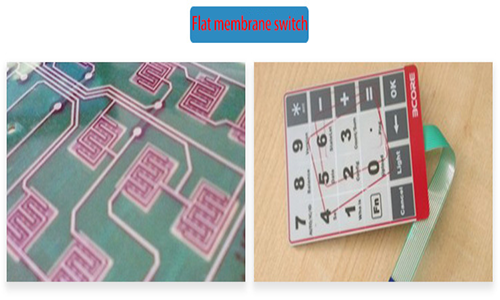
On the other hand, tactile membrane switches are engineered to deliver mechanical feedback through a noticeable "snap" action when pressed. This tactile response is crucial for user confirmation that an input has been registered. It significantly enhances usability and operational accuracy, especially in industrial machinery, household appliances, and consumer electronics where a positive feel is expected. My experience has consistently shown that for applications requiring frequent user interaction, tactile feedback is almost always preferred. The most common methods for achieving this tactile response involve integrating domes beneath the graphic overlay:
- Metal Dome Membrane Switches: These utilize precision-engineered stainless steel domes. When depressed, these domes provide a sharp, crisp tactile sensation and often an audible click. I consider metal domes the gold standard for tactile feedback. They offer high durability, consistent actuation force, and excellent resistance to environmental stressors. I once worked on a ruggedized handheld device for field technicians, and metal domes were the only choice that could withstand the constant abuse and provide reliable feedback in noisy outdoor environments. Their lifespan is typically in the millions of cycles, making them suitable for high-use applications.
- Polydome Membrane Switches: These incorporate molded plastic domes (usually polyester or polycarbonate) to create the tactile response. While they might not offer the same crispness as metal domes, polydomes provide a cost-effective tactile feedback solution. They are often found in networking equipment, point-of-sale terminals, and budget-sensitive consumer products. The design flexibility of polydomes allows for a range of actuation forces and lifespans, which can be customized during manufacturing. My experience has shown that while polydomes are more economical, careful design is needed to ensure consistent tactile feel across the entire keypad, as variations in molding can sometimes lead to inconsistencies.
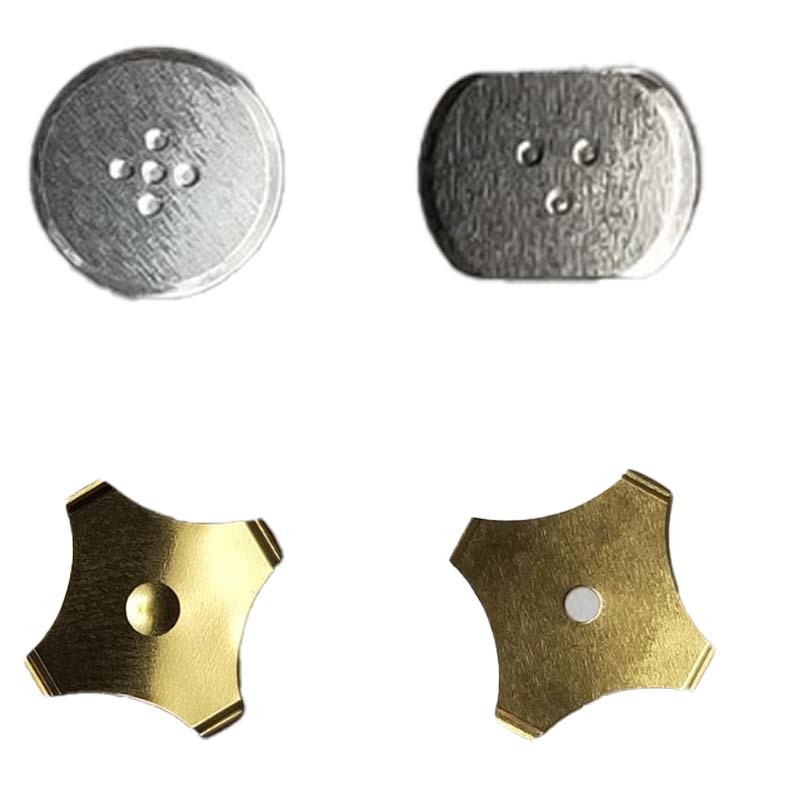
2. Backlighting: Illuminating the User Experience
In many applications, visibility of the user interface, especially in low-light conditions, is paramount. This is where backlighting comes into play. I've seen the evolution of backlighting technologies in membrane switches, and each has its advantages and disadvantages:
- LED Backlit Membrane Switches: These are the most common and versatile. Integrated Light Emitting Diodes (LEDs) are placed below the graphic layer, providing illuminated buttons or labels. LEDs offer high brightness, long lifespan, and a wide range of color options. They are ideal for medical devices, aerospace controls, automotive dashboards, and marine equipment. My professional tip here is to pay close attention to light diffusion and hot-spotting. Without proper light guide films or diffusion layers, you can end up with uneven illumination, which detracts from the professional appearance of the product. I once had a project where the client insisted on using off-the-shelf LEDs without proper diffusion, and the result was a patchy, unprofessional look that we had to redesign.
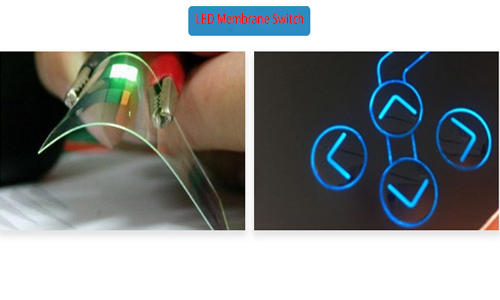
- Optical Fiber Backlighting: This method uses thin optical fibers woven into a cloth, which are then bundled and coupled to one or more LED light sources. Optical fiber backlighting provides extremely uniform illumination over large areas and is highly resistant to environmental extremes (temperature and humidity). While more expensive, it offers superior light distribution and a very long lifespan for the light source itself (as the LEDs are remote). I've used this in high-reliability aerospace applications where uniform backlighting and extreme environmental robustness were critical.
- Electroluminescent (EL) Lamps: EL lamps are thin, flexible light sources that provide a soft, uniform glow. They are lower priced than fiber optics and offer excellent design flexibility, allowing for custom shapes and sizes. However, their main drawback is a relatively shorter lifespan (typically 3,000-8,000 hours to half-brightness) and a tendency to fade over time. I've found EL lamps suitable for applications where the backlight is not continuously on, or where a soft, diffused light is desired for aesthetic reasons, such as in some consumer appliances. However, for critical applications requiring constant illumination, I would steer clear of EL due to its limited lifespan.
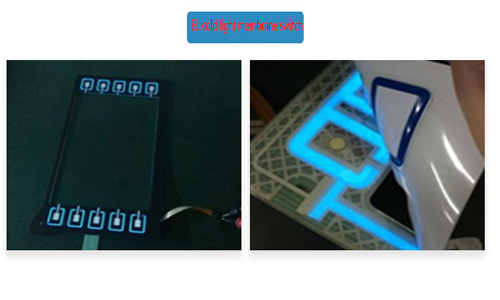
3. Environmental Sealing: Protecting the Core
One of the significant advantages of membrane switches is their inherent ability to be sealed against environmental contaminants. This is a critical consideration for products exposed to moisture, dust, chemicals, or extreme temperatures. I've designed switches for everything from outdoor industrial controls to medical devices that undergo rigorous sterilization. Achieving a robust seal involves advanced sealing technologies, such as perimeter gaskets, specialized adhesives, and protective overlays. These switches are often tested to meet rigorous IP (Ingress Protection) standards like IP65, IP67, or even NEMA ratings. My experience indicates that for any product destined for a harsh environment, investing in proper sealing is non-negotiable. A failure in sealing can lead to catastrophic product failure due to short circuits or corrosion. I once had a client who tried to cut corners on sealing for an outdoor agricultural device, and within months, we were dealing with widespread field failures due to moisture ingress. It was a costly lesson for them, reinforcing the importance of robust design from the outset.
4. Capacitive Membrane Switches: The Touch of Modernity
Capacitive membrane switches represent a more modern approach, moving away from traditional physical actuation. Instead, they detect changes in the electrical field when a finger approaches or touches the interface. This allows for sleek, button-less designs with no moving parts, offering a contemporary aesthetic and excellent durability. They are prevalent in high-end consumer electronics, touchscreen kiosks, wearable devices, and smart home products. The advantages include a modern appearance, customizable sensitivity, and ease of cleaning. However, I've found that designing with capacitive switches requires a different set of considerations, particularly regarding sensitivity tuning, false activations (e.g., from water droplets), and EMI/RFI shielding. My professional advice is to thoroughly test capacitive designs in their intended environment to ensure reliable performance, as environmental factors can significantly impact their operation.
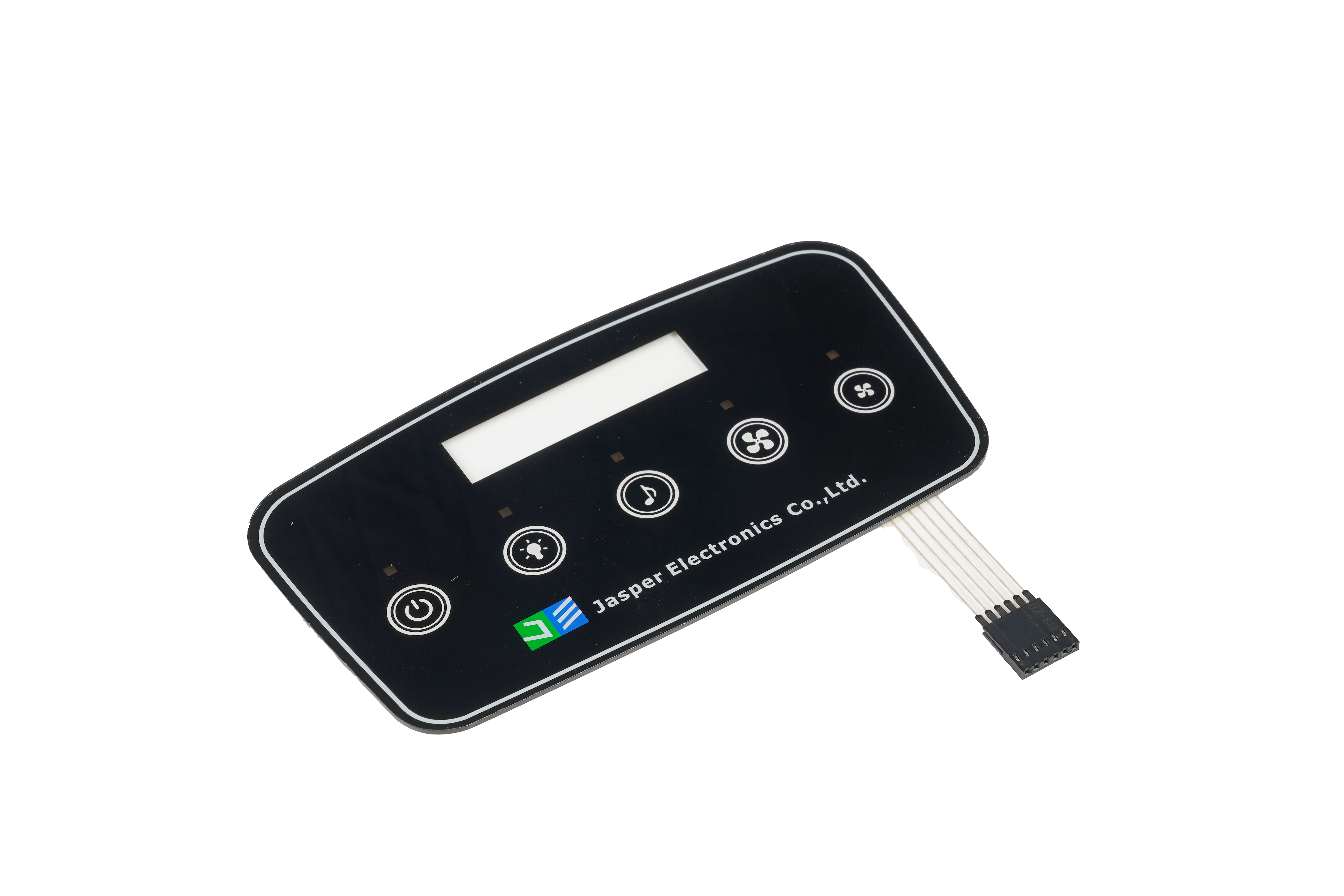
5. Custom Membrane Switches: Tailored for Perfection
Perhaps the most exciting aspect of working with membrane switches is the ability to create highly customized solutions. I've been involved in projects where every aspect, from multi-color printing and EMI/RFI shielding to integrated display windows and variable switch layouts, was tailored to specific requirements. This level of customization allows for optimal performance and seamless integration with the product's branding and user interface. My experience has taught me that close collaboration between the product design team, the electronics engineers, and the membrane switch manufacturer is crucial for success. Early involvement of the manufacturer can often lead to significant cost savings and improved performance, as they bring invaluable expertise in material selection, manufacturing processes, and design optimization.
Real-World Insights: Case Studies from My Career
Throughout my 20 years, I've accumulated a wealth of experiences, both successes and failures, that have shaped my understanding of membrane switches. Here are a couple of anecdotes that highlight key lessons:
Case Study 1: The Medical Device Dilemma – When Cleanliness is Next to Godliness
Early in my career, I was part of a team developing a new portable medical diagnostic device. The user interface needed to be extremely easy to clean and sterilize, as it would be used in various clinical environments. Initially, the design team opted for traditional mechanical pushbuttons, thinking they offered better tactile feedback. However, I immediately raised concerns about the crevices and gaps around the buttons, which would be impossible to thoroughly clean, posing a significant infection control risk. My experience indicated that a sealed, flat surface was paramount.
I proposed using a non-tactile membrane switch with a smooth, continuous graphic overlay. The team was hesitant, fearing the lack of tactile feedback would be an issue for medical professionals who often operate devices while wearing gloves. My solution was to incorporate a subtle, raised embossment around each button area on the graphic overlay, providing a visual and haptic guide without breaking the seal. We also implemented an audible feedback (a soft beep) when a button was successfully pressed. This combination proved to be highly effective. The device passed all sterilization protocols with flying colors, and the medical professionals found the interface intuitive and easy to use, even with gloves. My experience showed that sometimes, the best solution isn't the most obvious one, and a deep understanding of the technology allows for creative workarounds to seemingly intractable problems.
Case Study 2: The Industrial Control Panel – A Lesson in Environmental Robustness
Another memorable project involved designing a control panel for heavy industrial machinery operating in a dusty, vibrating, and often wet environment. The existing mechanical switches were failing frequently due to ingress of dust and moisture, leading to costly downtime. The client wanted a more robust solution. This was a classic case for a sealed membrane switch. We opted for a tactile membrane switch with metal domes for positive feedback, and critically, a robust perimeter gasket and a hard-coated polyester overlay with a textured finish to resist abrasion.
However, during initial field testing, we encountered an unexpected issue: the adhesive bonding the switch to the metal enclosure was failing prematurely, especially in areas with high vibration. The switches were literally peeling off! My initial thought was that the adhesive wasn't strong enough. But after some investigation, I realized the problem wasn't the adhesive strength itself, but the surface preparation of the metal enclosure. The client was using a standard cleaning process that left microscopic residues, preventing optimal adhesion. My professional trick here was to implement a more aggressive cleaning protocol for the bonding surface, including a solvent wipe and a primer application, followed by a specific pressure application during assembly. This seemingly small change made a massive difference. The switches now withstand the harsh industrial environment, and the client has reported a dramatic reduction in downtime. This experience reinforced my belief that the performance of a membrane switch is not just about the switch itself, but also about its integration into the larger system and the manufacturing processes involved.
Advanced Considerations and My Professional Tips
Beyond the basic types and construction, there are several advanced considerations that, in my experience, separate a good membrane switch design from a great one. These are the details that often get overlooked but can significantly impact performance, reliability, and cost.
1. EMI/RFI Shielding: Taming the Electromagnetic Beast
In today's electronic-rich environments, electromagnetic interference (EMI) and radio frequency interference (RFI) are constant threats. A membrane switch, with its conductive traces, can act as an antenna, either emitting or receiving unwanted noise. My experience has shown that proper shielding is crucial, especially for medical, aerospace, or industrial control applications where signal integrity is paramount. Common shielding methods include:
- Printed Silver Grids: A conductive silver grid can be printed on the inside of the graphic overlay or on a separate layer to create a Faraday cage effect.
- Transparent Conductive Films: Indium Tin Oxide (ITO) coated films can be used for display windows, providing transparency while maintaining shielding effectiveness.
- Grounding: Ensuring proper grounding of the shielding layer to the product's main ground plane is critical. I've seen many designs where shielding was present but ineffective due to poor grounding.
My professional tip: Always consider EMI/RFI shielding early in the design process. Retrofitting it later is often costly and inefficient. And always test the final assembly in a controlled environment to verify shielding effectiveness.
2. Integrated Components: More Than Just a Switch
Modern membrane switches are often much more than simple on/off buttons. I've designed switches that integrate a variety of components directly into their structure, simplifying assembly and reducing overall product size:
- LEDs and Resistors: As discussed with backlighting, LEDs are commonly integrated. Resistors are often included in series with LEDs to control current and brightness.
- LCD/OLED Display Windows: Clear windows can be incorporated into the graphic overlay to allow for displays to be viewed through the switch. My experience has shown that careful consideration of optical clarity and anti-glare coatings for these windows is essential.
- Light Guide Films (LGFs): These thin films, often with micro-prisms or dots, are used to uniformly distribute light from side-firing LEDs across a larger area, preventing hot spots and ensuring consistent illumination.
- Sensors: In some advanced applications, I've even seen pressure sensors or temperature sensors integrated directly into the membrane switch layers, turning the interface into a multi-functional input device.
3. Material Selection: The Foundation of Durability
The choice of materials for each layer is paramount to the membrane switch's performance and longevity. My experience has taught me that while cost is always a factor, compromising on material quality often leads to higher long-term costs due to failures and warranty claims. Key materials include:
- Polyester (PET): The workhorse of membrane switches, offering excellent flex life, chemical resistance, and dimensional stability. It's ideal for circuit layers and graphic overlays.
- Polycarbonate: Often used for graphic overlays, especially when a more rigid feel or specific optical properties are desired. It's generally less resistant to chemicals and has a shorter flex life than polyester.
- Adhesives: Acrylic-based adhesives are common for their durability and environmental resistance. The specific type (e.g., pressure-sensitive, heat-activated) and thickness are chosen based on the bonding surfaces and environmental conditions.
- Conductive Inks: Silver-filled inks are most common due to their high conductivity and cost-effectiveness. Carbon inks are used for lower conductivity applications or as a protective overcoat for silver traces.
My professional tip: Always request material data sheets from your supplier and verify that the chosen materials meet the product's environmental and performance requirements. Don't just assume; verify.
Applications: Where Membrane Switches Shine
Membrane switches are incredibly versatile, finding their way into almost every industry imaginable. Their benefits – ease of cleaning, sealing ability, low profile, and cost-effectiveness – make them a preferred choice over traditional mechanical switches in many scenarios. Here are some of the key application areas where I've seen them excel:
- Medical Devices: From infusion pumps and patient monitors to diagnostic equipment and hospital beds, membrane switches are ideal due to their easy-to-clean, sealed surfaces that prevent contamination. The ability to withstand harsh cleaning agents and provide reliable operation in critical environments is paramount.
- Industrial Controls: In factories, warehouses, and outdoor environments, membrane switches are used in control panels for machinery, heavy equipment, and process control systems. Their robustness against dust, moisture, chemicals, and vibration makes them highly reliable in these demanding settings.
- Consumer Electronics: Microwaves, washing machines, remote controls, home security systems, and even some smart home devices utilize membrane switches for their sleek appearance, ease of use, and cost-effective manufacturing.
- Automotive: While touchscreens are becoming more prevalent, membrane switches are still found in various automotive applications, including steering wheel controls, climate control panels, and infotainment systems, valued for their durability and ability to integrate seamlessly into complex dashboards.
- Aerospace & Defense: In cockpits, ground support equipment, and communication devices, membrane switches offer reliable performance in extreme temperatures, high vibration, and demanding operational conditions. Their lightweight and compact nature are also significant advantages.
- Appliances: From coffee makers to dishwashers, membrane switches provide a durable, easy-to-clean interface that can withstand spills and frequent use.
Practical Guide: Designing for Success
After years of working with membrane switches, I've developed a checklist of practical considerations that I always review during the design phase. Following these guidelines can save you a lot of headaches and ensure a successful product:
- Define the Environment: What are the operating temperatures, humidity levels, exposure to chemicals, UV light, or abrasion? This will dictate material selection, sealing requirements, and adhesive choices.
- Understand User Interaction: How often will the switch be pressed? Is tactile feedback essential? What kind of force is acceptable? This influences dome selection and overall switch lifespan.
- Consider Aesthetics and Ergonomics: How will the graphic overlay look and feel? Are the buttons clearly defined? Is it easy to clean? Collaborate with industrial designers early.
- Plan for Backlighting (if needed): What kind of illumination is required? Uniformity? Brightness? Color? This impacts LED selection, light guide films, and power requirements.
- Address EMI/RFI: Is the product sensitive to electromagnetic noise, or will it be operating in a noisy environment? Plan for shielding from the outset.
- Specify Connectors and Tail Design: How will the membrane switch connect to the main PCB? Ensure proper strain relief and connector compatibility. I always recommend specifying the exact connector part number.
- Work Closely with Your Manufacturer: Engage your membrane switch supplier early in the design process. Their expertise is invaluable for optimizing design for manufacturability, material selection, and cost reduction. They can often spot potential issues before they become costly problems.
- Prototype and Test Thoroughly: Never skip prototyping. Test the membrane switch in its intended application environment, under various conditions (temperature, humidity, vibration), and with the actual user base. This is where you catch unforeseen issues.
- Consider the Full Assembly Process: How will the membrane switch be integrated into the final product? What are the assembly tolerances? Is there enough clearance? Think about the entire manufacturing flow.
Future Outlook: What's Next for Membrane Switches?
While membrane switches might seem like a mature technology, I believe they still have a significant role to play in the future of user interfaces. We're seeing continued innovation in several areas:
- Enhanced Haptics: Beyond simple tactile domes, I anticipate more sophisticated haptic feedback mechanisms being integrated, providing richer and more nuanced sensations to the user.
- Flexible and Stretchable Electronics: As flexible and stretchable electronic substrates become more common, membrane switches will likely integrate seamlessly into wearable devices, smart textiles, and even conformable surfaces.
- Integration with Advanced Sensors: The trend of integrating more sensors directly into the interface will continue, allowing membrane switches to become truly multi-functional input devices, capable of detecting not just press but also force, gesture, and even biometric data.
- Smart Materials: New materials with self-healing properties, enhanced conductivity, or dynamic visual characteristics could revolutionize the durability and aesthetic possibilities of membrane switches.
- Cost Reduction and Sustainability: Continued efforts in manufacturing processes will likely lead to further cost reductions, making membrane switches even more accessible. There will also be a growing focus on sustainable materials and manufacturing practices.
My prediction is that while touchscreens will dominate certain segments, the reliability, durability, and cost-effectiveness of membrane switches will ensure their continued relevance, especially in harsh environments and applications where physical feedback is critical. They will continue to be the unsung heroes, quietly enabling seamless interaction with the technology around us.
Conclusion
My 20 years in the field have taught me that the membrane switch, far from being a simple component, is a testament to clever engineering and material science. It's a technology that demands attention to detail, a deep understanding of its layered construction, and a keen eye for its integration into the broader product ecosystem. From the initial concept to mass production, every decision, from material selection to adhesive choice, impacts its performance and longevity. I hope this deep dive, enriched with my personal experiences and professional insights, has provided you with a comprehensive understanding of what membrane switches are, how they work, and why they remain an indispensable part of modern electronic design. They are indeed the unsung heroes, silently facilitating our interaction with the world, one press at a time.
References:
- ASTM International. (n.d.). ASTM F1686 - 02(2018) Standard Terminology for Membrane Switches. Retrieved from https://www.astm.org/f1686-02r18.html
- IQS Directory. (n.d.). Assembly and Benefits of Membrane Switches. Retrieved from https://www.iqsdirectory.com/articles/membrane-switch.html
- CSI Keyboards. (n.d.). What is a Membrane Switch?. Retrieved from https://csikeyboards.com/what-is-a-membrane-switch/
Further Reading:
PDF Document Download:
For a comprehensive offline reference, you can download the full article in PDF format here: Download PDF
Relevant news
